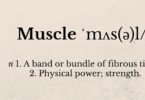Let’s start with some questions:
- Why is it so hard to motivate yourself to exercise?
- Is milk good or bad for you?
- Why are humans currently getting a load of diseases that weren’t a problem even a hundred years ago?
- Why is it so god damned hard to get really, really jacked?
Don’t worry too much if you can’t answer those. I could have a go at them, but I’m not kidding myself that my answers would tell the full story. A smarter man/woman than me could probably answer them much more comprehensively, but I’d still expect them to start with “Well, it’s complicated…” They seem pretty simple, but – like many things related to the human body – the answers rely on a tonne of different biological processes, many of which still aren’t fully understood by the scientists who spend all their time studying them.
Here’s a better question to worry about: how do you start to understand this stuff?
In a recent Reddit AMA, Elon Musk, the CEO of SpaceX and chief product architect of Tesla Motors, talked about the approach to knowledge that’s helped him to understand (among other things) lithium batteries, car design, electric motors, rocket structures, rocket engines, avionics and aerospace engineering. Quote:
“I think most people can learn a lot more than they think they can. They sell themselves short without trying.
One bit of advice: it is important to view knowledge as sort of a semantic tree — make sure you understand the fundamental principles, ie the trunk and big branches, before you get into the leaves/details or there is nothing for them to hang on to.”
Tim Urban, who’s done his own phenomenal blog series on Musk, extends this metaphor a bit by talking about clearing the fog around a topic:
“I’ll start with the surface of the topic and ask myself what I don’t fully get—I look for those foggy spots in the story where when someone mentions it or it comes up in an article I’m reading, my mind kind of glazes over with a combination of “ugh it’s that icky term again nah go away” and “ew the adults are saying that adult thing again and I’m seven so I don’t actually understand what they’re talking about.” Then I’ll get reading about those foggy spots—but as I clear away fog from the surface, I often find more fog underneath. So then I research that new fog, and again, often come across other fog even further down. My perfectionism kicks in and I end up refusing to stop going down the rabbit hole until I hit the floor…Hitting the floor is a great feeling and makes me realize that the adults weren’t actually saying anything that complicated or icky after all. And when I come across that topic again, it’s fun now, because I get it and I can nod with a serious face on and be like, “Yes, interest rates are problematic” like a real person.
What I usually find is that so many of the topics I’ve pegged as “boring” in my head are actually just foggy to me—like watching episode 17 of a great show, which would be boring if you didn’t have the tree trunk of the back story and characters in place.”
I agree with all of this, obviously.
So then, since ‘fitness’ and ‘health’ are such limitless areas, with such enormous amounts of misinformation being peddled around relating to them, is: what’s the trunk that you need to learn about, so that you can pin more branches of knowledge to it? What’s the floor?
There might be a few answers to this question. But for me, the best answer came from American geneticist Theodosius Dobzhansky, about forty years ago.
“Nothing in biology makes sense except in the light of evolution.”
Evolution, as far as I understand it, isn’t that difficult to understand. Unfortunately, though, it’s one of those things that a lot of people file in their brains under ‘Things I Get Well Enough To Not Actually Look Up’, and so never look up, even when looking it up would be helpful. At one point, I thought I understood it, and then – after an extended and infuriating conversation with a pair of Jehovah’s Witnesses – I realised that I didn’t actually get it at all. Then I read a load of books – reading list at the end of the post – and I understood it much better. Then, when I started reading more and more about health, fitness, and nutrition, I realised that a lot of the most basic mistakes people were making were based on misunderstandings of how the human body works, which are much harder to make if you understand evolution.
This post, then, is my attempt to explain evolution, and what it means for your plan to get jacked. Get yourself a coffee and buckle the fuck up: this is going to take a while.
Part 1: How evolution works
Let’s start here. Full disclosure: this is my best effort to simplify a whole lot of science that a whole lot of people have explained better than me. I strongly recommend that you read some of their stuff – book suggestions at the end – and, if you already understand evolution, really understand it, you could probably skip onto part 2. But hey, why not stay with it, eh? It’s only five minutes of your life.
Okay. First, think about dogs.
Imagine you’re a dog breeder, and you want a dog with tiny ears. So you buy 100 wild dogs, breed the ones with the smallest ears, and neuter or otherwise stop the others from breeding. Three years later, the children are grown up, so you do it again: find the smallest-eared 100, breed those, neuter the rest. Each generation is slightly random, so there will be dogs varying in ear-size, but they’ll probably all be closer to the small-eared side because they had small-eared parents. Eventually, you’ve got a load of tiny-eared dogs that look very different to the ones you start with. This is evolution by artificial selection, and it’s worth mentioning that it can cause huge changes very, very quickly: in just a few generations or so. Also worth noting, but a bit more complicated, is that it can have interesting and unintended side-effects: when foxes are bred for domestication, ie you only mate the ones that allow humans to approach them without freaking out, the offspring eventually develop more dog-like tails, suggesting that there’s some linkage in the way the domestication/friendliness/bushy-tail genes operate. But you don’t need to worry about that at the moment.
Evolution by natural selection is what happens when nature provides the selection criteria. We all inherit DNA, which is the blueprint for our body, from both parents – and sometimes that DNA mutates, changing the blueprint. Some mutations are almost universally good, like immunity to disorders, and some are really bad, like getting other disorders. Others are fairly neutral – like eye colour – and others only become a benefit or a problem under circumstances. Thick fur, if you live somewhere cold, is a ‘good’ mutation. If you live somewhere warm, it’s a ‘bad’ mutation. Slightly more complicatedly, even mutations that seem pretty-much universally ‘good’ might work out badly – or at least, not optimally – if the conditions are wrong. If you’re a giraffe, and there’s plenty of food on the ground, and no predators in sight, then growing (and maintaining) a massive neck is a waste of resources (and calories) that might come in more useful elsewhere. Having a huge brain is helpful for a lot of reasons, but it’s also horrendously calorically expensive, which might make it an evolutionary disadvantage if food is scarce and you don’t actually need a huge brain to become more reproductively successful. More subtle things make a difference, too: obviously muscle, claws and improved senses can be helpful, but so can things like an evolved tendency to be skittish, or sociable. Bigger teeth might help, but so might an ability to digest food sources that competitors (from your own species, or others) can’t.
This is where two important misconceptions come in.
Firstly, the idea that evolution is about helping organisms survive better. This is sort of true, but only to a point: the real key is that the organisms have to be successful at replicating. If you have a whole load of offspring and then die immediately afterwards, you are still wildly successful at disseminating your genes, and you’ve been very evolutionarily successful compared to, say, someone/thing who has a few offspring (or none) but lives into extremely old age. Everyone in your family could have an awful disease that kicks in at 50: if it doesn’t affect your chances of having offspring before then, then it’s not really an evolutionary disadvantage, and unlikely to drop out of the gene pool. There’s minimal selection pressure against it, and selection pressure against non-optimal traits is really what evolution is about.
Secondly, the idea that evolution is a process by which everything becomes better. Evolution doesn’t have a goal in mind – it’s just what inevitably happens when genes help certain animals have babies and stops others from having babies – the former genes spread, the latter don’t. A human is not ‘more evolved’ than a rat – we’re just differently evolved, for different problems. Survival of the ‘fittest’ means, specifically, the fittest for whatever circumstances are happening. A corollary of this, hopefully obvious, is that evolution hasn’t ‘stopped’ in humans: we aren’t the end of a process, but a part of it.
Hopefully this all makes sense so far. On to…
Part 2 (optional): But what about…
This isn’t a post about the evidence for evolution: there is an absolutely staggering amount of that, and I’m not going to list it here. It also isn’t a post about claims that ‘some’ scientists don’t believe in evolution (TL;DR, it’s a tiny number, and getting smaller), or that they disagree about it (they do, but on tiny mechanisms, not the overarching theory). Determined not to believe in evolution? Fair enough, keep doing that: come back to me when you’re interested in getting jacked. For everyone else, here are a few of the common problems people have with evolution, which actually might help you understand it better.
If humans evolved from monkeys, why do monkeys still exist?
Firstly: nobody is arguing that humans evolved from monkeys. Humans and monkeys evolved separately from a single common ancestor. Secondly, if humans had evolved from monkeys (they haven’t), that wouldn’t necessarily mean no more monkeys: sometimes, a species can split in two, and the ‘ancestral’ version survives, usually because of geographical divides. This sort of happens with dogs and wolves, but more often happens with plants: broccoli, cabbage, kale and cauliflower all exist, but so does wild mustard, which is their ancestral species. Note: please, please do not yell ‘What about wild mustard though?’ at a Jehovah’s witness. It makes them sad.
How do you evolve an eye?
One popular argument is that some products of evolution are too complex to have come about as a mutation, but also pointless unless they exist in their entirety: ‘What’s the use in half an eye/wing?’ are common creationist tropes. The answer: quite a lot of use. Wings, for instance, might have evolved as tiny nubs on the backs of animals that helped them to keep their balance, slowly evolving into bigger nubs that helped those animals to hop short distances or glide slightly longer ones (there’s fascinating research, incidentally, suggesting that dinosaurs might have used feathers for defence). Similarly, an eye could have started as a bundle of cells that was slightly more sensitive to changes in light-intensity: for instance, to allow cave-dwelling fish to work out which way was ‘up.’ The answer to how you evolve anything complicated is the same: ‘incredibly slowly, and a bit at a time.’
Isn’t this all staggeringly unlikely?
No. Sure, it’s staggeringly unlikely that any given planet will have the right conditions for life to thrive in, and it might even be staggeringly unlikely that molecules would form into stable configurations and start to multiply even under those conditions (for more on this, read this bit from The Selfish Gene). But there are billions of galaxies in the universe, maybe trillions, and for you to be reading this, the staggeringly-unlikely stuff only had to happen once. The rest – organisms replicating according to natural selection – proceeds incredibly slowly, and entirely logically. Remember: after the first bit, which only had to happen once, nothing is an ‘accident’. Different traits and random mutations are ‘selected’ by environmental pressures, and animals evolve as a result. It’s had millions of years to get us to where we are now, and you could do it on purpose with tiny-eared dogs in under half a decade.
Seriously: I can’t do all this justice, and it’s worth reading some books on it. But here’s the bit you came for:
Part 3: How does this all relate to fitness?
Two key ways.
Firstly, understanding evolution properly gives you a filter to help process any batshit crazy claims anyone makes about eating, training or almost anything else relating to the human body. If they don’t make sense in the context of evolution, it is incredibly unlikely that they make sense at all.
Secondly, it lets you understand why your body sometimes seems to be fighting against you in your efforts to lose fat/build muscle, and helps you to a) Avoid frustration and b) Work around what’s happening.
Take fasting. For our cave-dwelling ancestors, operating under much more extreme environmental pressures than anyone in a developed country today, not eating for several hours or a day at a time wasn’t a lifestyle choice, but a regular occurrence. Here’s the question: do you think missing breakfast dropped their metabolic rates, making them sluggish and cognitively impaired and much less able to go out and find food? If you said ‘no’, congratulations: you’re ahead of a whole lot of self-declared nutritionists. In fact, studies have found an increase in metabolic rate after short-term fasting, with adrenaline and noradrenaline kicking in to get us moving. Metabolic rate only slows after 60 hours of food deprivation, which also makes sense: at some point, your caveman body’s going to accept that there isn’t much food around and shut down non-essential systems to keep things going for the long haul. This is also born out by how well fasting seems to work in comparison to the traditional calorie-restricted diet: ‘tell’ your body that it’s only going to get 1,000 calories a day for the foreseeable future (by cutting your calories to that level for a few weeks), and it eventually downregulates everything to make sure you don’t die: take 16 hours off eating occasionally and it upshifts metabolism so you can go out and hunt down some goddamn mammoths.
Alternatively, look at protein consumption. Common ‘knowledge’ in fitness circles has it that you can only absorb around 20-30g of protein per meal, with the rest being oxidised or excreted. Does this make sense? I’ll give you a second.
Hopefully you said no again. Alan Aragon explains it best:
“Let’s imagine an experiment involving two relatively lean 200lb individuals. For the purposes of this illustration, I’ll assign a daily amount of protein known to adequately support the needs of the athletic population. We’ll give Person A 150 g protein spread over five meals at 30 g each. We’ll give Person B the same amount of protein, but in a single meal. Let’s say that this meal consists of a 16 oz steak, chased with a shake containing two scoops of protein powder.
If we really believed that only 30 g protein can be handled by the body in a single meal, then Person B would eventually run into protein deficiency symptoms because he supposedly is only absorbing a total of 30 g out of the 150 g we’re giving him. At 30 g/day, he’s only getting 0.33 g/kg of bodyweight, which isn’t even half of the already-low RDA of 0.8 g/kg. If the body worked this way, the human species would have quickly become extinct. The human body is more efficient and effective than we give it credit for.”
In fact, what happens is (again, borne out by multiple studies) is that the body takes its time to digest almost any dose of protein you give it. Or, to put it another way, if you’ve gone to all the effort of killing a mammoth, you might as well eat a whole lot of it at once, since you probably haven’t got any tupperware.
Thinking things through from an evolutionary perspective also works for things that aren’t diet. Take stress: as neurologist and author Robert Sapolsky explains, our bodies are wired up for occasional bursts of acute physical stress, like hunting or fighting or running away from things. To simplify things massively, the body’s stress-response has evolved to divert resources from biological processes that make sense in the long term – proper digestion, fat metabolism, rebuilding muscle, the immune and reproductive systems – into short-term ones that let you run or fight. Stress out constantly – because you’re getting psychologically worked up about daily life – and your body has no time to cope with anything else. Or, as Sapolsky puts it: “The army doesn’t run out of bullets. Instead, the body spends so much on the defense budget that it neglects education and health care and social services. The stress-response can become more damaging than the stressor itself, especially when the stress is purely psychological.”
Or look at your tendency to avoid the gym and eat biscuits. ‘It is natural and normal to be physically lazy,’ explains Professor Dan Lieberman, ‘Although evolutionary history specially adapted humans to be athletes, we are just as adapted to be inactive…one must keep in mind that since humans until recently never had the chance to avoid being physically active on a regular basis, there was never strong [natural] selection to prevent persistent and extreme physical inactivity.” Meanwhile, you’re adapted to seek out (and binge on) energy-dense sources of food, since until recently (in evolutionary terms) there was no selective pressure against eating as many calories as you could get. It’s only in the last hundred years that it’s even become possible for most of the population to become inactive enough to need to worry about diseases caused by low cardiovascular capacity or weakened bones, or to eat so much that obesity-related disease kicks in. Lieberman, in case you’re wondering, suggests making exercise playful to counteract this tendency to be lazy, since that’s what seems to happen in hunter-gatherer communities. His stuff is worth a read.
There are dozens more ways this sort of thing applies, but since I’m trying to keep this post under 5,000 words, here are two facts worth remembering: muscle is calorically expensive, and fat is there to help you not die. If you’re trying to get really, really lean and jacked, your body is going to fight you to some extent, because it’s (rightly) convinced that you don’t really need that muscle to survive, and (possibly wrongly) certain that it’s always worth having some fat to fall back on. That’s why it’s hard to put on muscle, and that’s why it’s hard to lose fat…and why, to get to the real extremes of jackedness, you need to trick your body out of its natural inclinations. That’s a subject for another post, though. For now, let’s move on. To…
Part 3(b): So I should do the Paleo Diet?
Nope. Because here’s the final, and possibly-trickiest part of all this to get: lots of people who cite ‘evolution’ as part of their training philosophy are getting evolution wrong. The most insane one I’ve seen recently came from an incredibly popular coach, with thousands of devoted followers, who said (I’m paraphrasing so you can’t find + shame the coach):
“Unlike animals which evolved for flight and fighting, plants evolved to protect themselves by producing toxins. This is why animal tissue is safer to eat.”
Leave alone, for a second, the conditions under which a lot of modern animals are raised, because I’m sure we can all agree that eating happy, free-range animals is best. Here’s the question: does the above make sense? Open book test, this one’s trickier.
It’s another no, and here’s why: remember, the plants don’t just need to survive to be evolutionarily successful, they need to reproduce. If you’re a berry tree, and you can convince a herbivore to eat your berries and then spread the seeds over a wide area in their manure (as opposed to, say, just dropping them in the ground near your own roots, where they’ll have to compete with all their seedling brethren), you are likely to be a massive evolutionary success. Sure, you want to stop the animal from eating your branches, and you might grow thorns or give off toxins to avoid that, but why would you make your fruit toxic? The logic sounds sensible, but start at the trunk and you realise things aren’t that simple.
Then, of course, there’s the Paleo Diet. In case you aren’t familiar, the basic premise of Paleo (at least when it first emerged) was that the 2.6 million years since the paleolithic era haven’t been long enough for humans to adapt to the foods that humans began eating after the Neolithic Revolution when humans transitioned from hunter-gatherer lifestyles to settled agriculture – and so, for optimal health, we should all be eating vegetables, fruits, nuts, roots, meat, and organ meats while excluding dairy products, grains, sugar, legumes, processed oils, salt, and alcohol or coffee. For the moment, let’s leave aside that modern fruits and vegetables have been so selectively-farmed (or evolved via artificial selection) that they bear essentially no resemblance to the foods our paleolithic ancestors would have eaten, as persuasively argued by Christina Warriner in this TED talk. Does the rest make sense? No again: 2.6 million years is plenty of time for evolution to work, and in fact modern humans are digestively-diverse, and certainly different from our paleolithic ancestors. To take just one example, look at milk: studies by Sarah Tishkoff from the University of Maryland suggests that three different genetic mutations resulting in lactose tolerance in Africa arose between 2,700 and 6,800 years ago. The obvious reason for this: lactose tolerance is only really an evolutionary advantage in environments where humans have access to domesticated dairy animals. That happened in the Middle East, North Africa and Europe around 7,000 years ago, and suddenly, if you had the random genetic mutation that allowed you to digest milk without getting ill, you had a ready source of easy, nutritious food that other people didn’t, making you more likely to have healthy, surviving children and pass the gene on. There’s even a divide between countries: in hotter climates, where it’s easy and quick to ferment milk into yoghurt (which has much less lactose) or hard cheese (which has almost none of it), lactose intolerance is higher, because it wasn’t an evolutionary necessity. If you needed nutrients fast in, say, Turkey, where, as UCL professor of evolutionary genetics Mark Thomas points out, “If you milk a cow by morning it’s yoghurt by lunchtime,” you’d be fine. In Germany, you might have to risk drinking the milk – and either getting weaker from your intolerance (evolutionary disadvantage) or getting a quick calorie hit (advantage). Under those circumstances, change happens quickly.
Paleo advocates, incidentally, have taken this stuff in stride, adapting their claims to suggest that paleo-style eating is backed by research rather than evolutionary theory, and that it’s still a better way of eating than a modern diet full of refined foods, trans fats and sugar. I don’t have a problem with this: they’re probably right. The point remains: if you’re going to believe that something works based on evolution, start from your knowledge-trunk/floor and work from first principles: does it actually make sense?
Part 4: Everything Else
Here’s a final reason to learn about evolution: it also governs almost everything else. Take it, Dawkins:
“What, after all, is so special about genes? The answer is that they are replicators. The laws of physics are supposed to be true all over the accessible universe. Are there any principles of biology which are likely to have similar universal validity? When astronauts voyage to distant planets and look for life, they can expect to find creatures too strange and unearthly for us to imagine. But is there anything which must be true of all life, wherever it is found, and whatever the basis of its chemistry? If forms of life exist whose chemistry is based on silicon rather than carbon, or ammonia rather than water, if creatures are discovered which boil to death at -100 degrees centigrade, if a form of life is found which is not based on chemistry at all, but on electronic reverberating circuits, will there still be any general principle which is true of all life? Obviously I do not know but, if I had to bet, I would put my money on one fundamental principle. This is the law that all life evolves by the differential survival of replicating entities. The gene, the DNA molecule, happens to be the replicating entity which prevails on our own planet. There may be others. If there are, provided certain conditions are met, they will almost inevitably tend to become the basis for an evolutionary process.”
That might be a bit much, but don’t worry: the central point is that ‘replicators’ exist everywhere, and that natural selection based on external pressures (or a lack of them) is what decides which of them will survive and thrive. You can argue that this happens everywhere: Dawkins coined the term ‘meme’ to describe the way that ideas are transmitted between cultures, responding to selective pressures in exactly the same ways as genes. Things get trickier in business, politics, religion and popular workout regimes, but the threads are the same: some ideas are popular or memorable or otherwise persistent, others fall by the wayside. And it happens everywhere.
Too much to think about? Maybe. But the principle remains the same: evolution governs a huge amount of what happens in the world, including the biology of your own body. By understanding it, you give yourself a ground floor to start understanding everything else, and a way to judge every other idea people throw at you. By ignoring it, or pretending it doesn’t exist, you make yourself vulnerable to fad diets, and idiotic workout strategies, and people who don’t understand biology themselves. It’s one of the most important things you can learn about: so you might as well learn about it. Start today.
Homework:
If you only read one book about evolution, I’d recommend The Selfish Gene, which sets out the ‘gene’ theory of it in relatively simple terms. If you’re into the evidence for it (and elegance of it) you could follow up with The Greatest Show On Earth, which is packed with the actual evidence for evolution and a tonne of interesting anecdotes. I’d also recommend Matt Ridley’s The Red Queen. And to change the way you think about stress, have a go on Why Don’t Zebras Get Ulcers, which also happens to be massively fun to read.
For fitness stuff, read Martin Berkhan’s work at LeanGains, but especially this piece debunking fasting myths with frequent references to evolution. To understand the myths about ‘starvation mode’ and the failings of calorie-based dieting, have a look at Jason Fung’s work, but especially this piece. And if you’re in a scholarly frame of mind, read Dan Lieberman’s evolutionary perspective on exercise, here. Then watch that Christina Warriner talk, and read JBS Haldane’s On Being The Right Size, because Haldane is the fucking best. From there, just read what those guys recommend, and let me know what you’ve found out in the comments. And Live Hard!







Powerful piece Mr. Snape, thank you very much.
One of my goals this year is to get a better understanding of science. Who knew I could get jacked at the same time?
Great reading list. I’ve got the Selfish Gene and Red Queen lined up and will check out the others.
Thanks again, keep living hard.
Thanks, that was a really enjoyable read and funny too.
The one that always threw me was the need to do stretching exercises before and after exercise.
When deciding to run down a mammoth or two I can’t imagine all the hunters first did a series of vigorous stretching exercises. They just walked to the hunting ground, warming up as they moved and then went into hunting mode when they needed to.
Once successful I doubt they did a series of stretching exercises to chill out again either. Stripping, preparing and carrying meat back to camp should have been sufficient.
Interesting point! I think modern warmup theory (general warmup + dynamic stretches first, static stretches after) kind of meshes well with what would have ‘naturally’ happened: it’s unlikely (though possible) that anyone would go from zero motion to a full sprint, but also a lack of chairs and a great deal of general physical activity would have given most cave-dwellers a fairly decent base of fitness, with none of the weird imbalances people get from chairs these days…